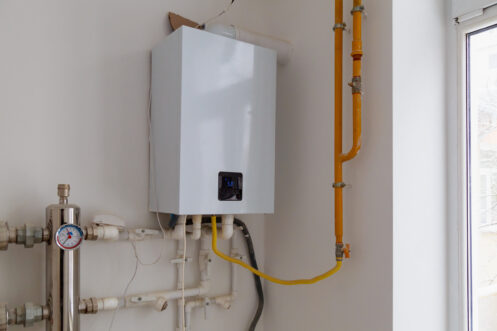They are making a number of good points relating to How to Maintain a Hot Water Heater in a Few Simple Steps in general in this content just below.

Warm water is vital for daily comfort, whether it's for a revitalizing shower or cleaning dishes. To guarantee your hot water system runs successfully and lasts longer, routine upkeep is essential. This post provides useful tips and understandings on just how to preserve your home's warm water system to stay clear of disruptions and pricey repair work.
Intro
Maintaining your home's warm water system might appear overwhelming, yet with a few straightforward steps, you can guarantee it runs smoothly for several years to come. This guide covers whatever from comprehending your warm water system to do it yourself maintenance pointers and knowing when to hire specialist help.
Importance of Preserving Your Warm Water System
Normal maintenance not just expands the lifespan of your warm water system yet also ensures it operates effectively. Ignoring upkeep can result in reduced performance, higher energy bills, and also early failure of the system.
Indicators Your Hot Water System Requirements Upkeep
Recognizing when your hot water system needs attention can avoid major problems. Watch out for indicators such as inconsistent water temperature, odd noises from the heating unit, or corroded water.
Recognizing Your Hot Water System
Before diving into upkeep jobs, it's valuable to recognize the standard components of your hot water system. Generally, this consists of the hot water heater itself, pipelines, anode poles, and temperature controls.
Monthly Upkeep Tasks
Normal month-to-month checks can aid capture minor issues before they escalate.
Purging the Hot Water Heater
Flushing your water heater removes sediment buildup, improving effectiveness and extending its life.
Checking and Replacing Anode Rods
Anode rods prevent corrosion inside the tank. Examining and replacing them when worn out is essential.
Examining and Readjusting Temperature Level Setups
Readjusting the temperature level setups makes sure ideal efficiency and security.
DIY Tips for Maintenance
You can execute numerous upkeep tasks on your own to maintain your hot water system in top condition.
Checking for Leaks
Routinely inspect pipes and links for leakages, as these can result in water damage and higher costs.
Examining Stress Alleviation Valves
Checking the pressure safety valve ensures it functions properly and prevents extreme stress build-up.
Shielding Pipes
Insulating warm water pipelines decreases heat loss and can conserve energy.
When to Call a Specialist
While do it yourself maintenance is advantageous, some issues call for expert knowledge.
Complicated Issues Requiring Specialist Assistance
Examples include major leakages, electrical problems, or if your hot water heater is regularly underperforming.
Regular Expert Upkeep Perks
Professional upkeep can consist of comprehensive assessments, tune-ups, and ensuring conformity with security standards.
Final thought
Routine upkeep of your home's hot water system is essential for performance, longevity, and price financial savings. By complying with these pointers and knowing when to look for professional aid, you can guarantee a dependable supply of warm water without unexpected disturbances.
How to Maintain an Instant Hot Water Heater
Before tinkering with your hot water heater, make sure that it’s not powered on. You also have to turn off the main circuit breaker and shut off the main gas line to prevent accidents. Also turn off the water valves connected to your unit to prevent water from flowing into and out of the appliance. 2. When you’re done, you have to detach the purge valves’ caps. These look like the letter “T” and are situated on either side of the water valves. Doing so will release any pressure that has accumulated inside the valves while at the same time avoid hot water from shooting out and burning your skin. 3. When the purge valves’ caps are removed, you have to connect your hosing lines to the valves. Your unit should have come with three hoses but if it didn’t, you can purchase these things from any hardware or home repair shops. You can also get them from retail stores that sell water heating systems. Read the user’s manual and follow it to complete this task properly. When the hosing lines are connected, open the purge port’s valves. 4. You should never use harsh chemical cleaners or solutions when cleaning your unit. Make use of white vinegar instead. It should be undiluted and you’ll probably use about 2 gallons. 5. Now flush your water heater. This task should probably take about 40 minutes. We can’t give you specific directions for this because the procedure is carried out depending on the type, model and brand of your heater. With that being said, refer to the user’s manual. 6. When you’re done draining the unit, you have to turn off the purge port valves again. Remove the hosing lines that you earlier installed on each of the water valves. Put the valve caps (purge port) back in their respective places and be very careful so as not to damage the rubber discs that are found inside these caps. 7. Now that everything’s back in place, check your user’s manual again to find out how to reactivate your water heating system. 8. Once it is working, turn one of your hot water faucets on just to let air pass through the heater’s water supply pipes. Leave the tap on until water flows smoothly out of it. https://www.orrplumbing.com/blog/2014/september/how-to-maintain-an-instant-hot-water-heater/

I was brought to that article about Tips on Maintaining a Water Heater through a pal on a different web page. Appreciated our blog entry? Please quickly share it. Help another person check it out. We love your readership.
This Resource